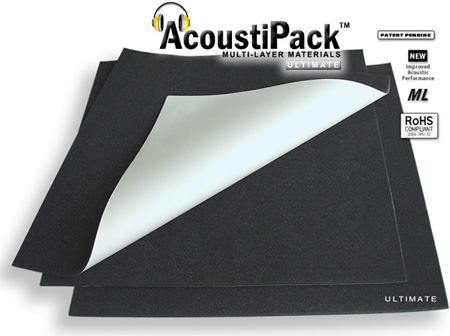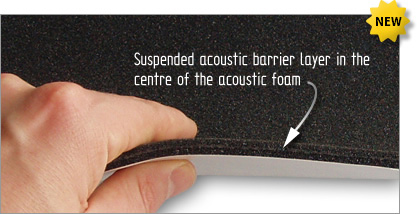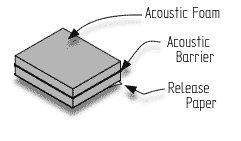Sound Dampening Computer Case Insulation
Our silent systems are specifically designed using parts which are the best that silent computing has available. Every item in our systems (as well as the manner in which our quiet PCs are designed, assembled, and configured) is chosen with the most demanding quiet computer enthusiast in mind. As such, most clients will not require the added use of sound dampening materials in order to craft a system that is truly quieter than any other machine previously experienced.
Every Silent System we sell is "quieter than a whisper" and, as such, most customers need to put their ear right to the back of their PC to even tell that the PC is on. However, those true quiet enthusiasts among you may enjoy the added dampening that noise insulating materials give you.
These noise insulating materials shave off that little whir of noise (already far quieter than a standard PC), and bring your Quiet PC down to the level of an almost inaudible soft breeze. If you are interested in the quietest PC possible, consider the following options for noise dampening materials.
AcoustiPack™ ULTIMATE 3-Layer PC Soundproofing Kit

AcoustiPack™ ULTIMATE sets a new standard for PC soundproofing material kits, where the maximum noise reduction is required in a limited space. This multi-layer materials kit includes 3 sheets; two 2-layer (4mm thick) and one sheet of our latest generation 3-layer materials, providing superb levels of noise reduction despite the thickness being only 7mm. This soundproofing kit is designed to reduce the noise emanating from noisy PCs with case sizes ranging from standard ATX up to larger E-ATX and pedestal server cases used by gamers, power-users and small business users.

 In this latest generation of 3-layer composite (Patent Pending), the dense acoustic barrier layer has been 'suspended' away from the substrate in the centre of the acoustic foam. The construction layering is like this: (noise source) acoustic foam -> acoustic barrier -> acoustic foam (then the substrate, which is usually a metal sheet panel).
In this latest generation of 3-layer composite (Patent Pending), the dense acoustic barrier layer has been 'suspended' away from the substrate in the centre of the acoustic foam. The construction layering is like this: (noise source) acoustic foam -> acoustic barrier -> acoustic foam (then the substrate, which is usually a metal sheet panel).
Sound energy first hits the upper foam surface, which is similar to the 2-layer construction, in that it is a low-reflective soundproofing material that is particularly effective at absorbing high frequencies. The sound energy then encounters the central suspended barrier layer, which is decoupled from the substrate. This high-density high-mass layer acts as an acoustic barrier mass to the transmission of energy through the material. The 3rd layer of foam acts to suspend the barrier layer a small distance away from the substrate. We have found from both small scale impedance tube and larger scale reverberation chamber acoustic tests that the 'suspended' central acoustic barrier effectively increases the absorbtion of low frequency noise (<1kHz). This may well be a result of the 'mass-spring effect', where low frequency energy is absorbed by the sound 'moving' the layer when it is excited by certain resonant frequencies.